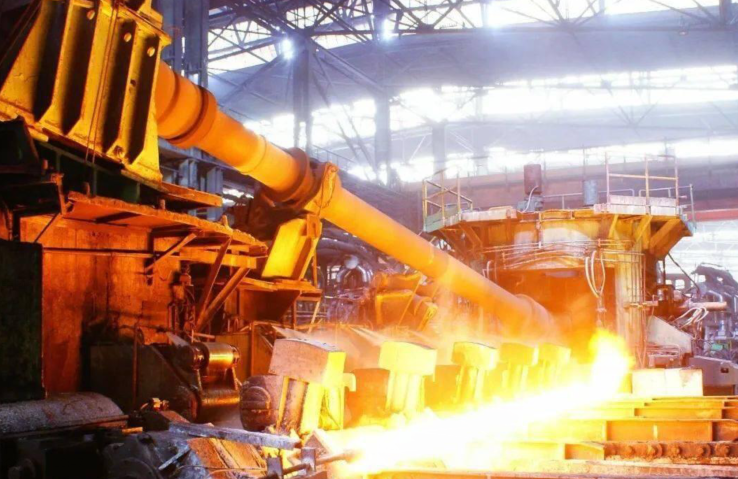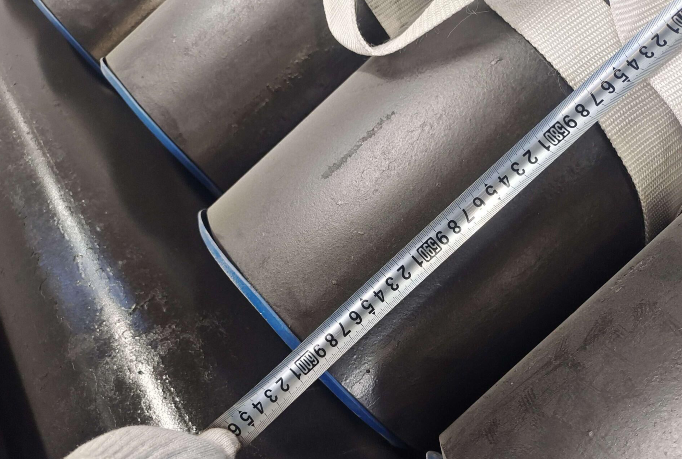
General Terms for Steel Pipes
1. Delivery status
Refers to the final plastic deformation or heat treatment state of seamless steel pipe products. Divided into hot rolling, cold drawing (rolling) state or manufacturing state, and heat treatment state, such as normalizing, quenching and tempering, solid solution, annealing state. The delivery status must be stated in the contract.
2. Delivery of actual weight or theoretical weight of seamless steel pipe
The actual weight delivery is calculated according to the weighed (weighed) weight, and the theoretical weight delivery is based on the weight calculated from the nominal size.
3. Warranty
Carry out inspections according to the items specified in the standards and ensure compliance with the standards. Divided into basic guarantee conditions and agreement guarantee conditions. The basic guarantee conditions are chemical composition, mechanical properties, dimensional deviation, surface quality, flaw detection, hydraulic test or process performance tests such as flattening or flaring. The guarantee conditions of the agreement are the terms and requirements indicated in the contract according to the requirements of the buyer.

4. Batch
An inspection unit, the inspection lot. When the delivery batch is large, one delivery batch can include several inspection batches; when the delivery batch is small, one inspection batch can be divided into several delivery batches. Each batch shall consist of steel pipes of the same designation (steel grade), same furnace (tank) number or the same mother furnace number, same specification and same heat treatment system (heating number). For high-quality carbon steel structural pipes and fluid pipes, they can be composed of steel pipes of the same brand, the same specification and the same heat treatment system (heat) in different furnaces (tanks). Each batch of welded steel pipes shall consist of steel pipes with the same welding process, the same welding consumables, the same operator, the same specification and the same heat treatment system (heat).
5. Size
1) Nominal size: It is the nominal size required in the specification, the ideal size expected by customers and manufacturing companies, and the order size indicated in the contract.
2) Specific size: It is the specific size obtained during the production process, which usually exceeds or falls below the nominal size. This over or under nominal size is called deviation.
3) Meter weight: net weight per meter=0.02466*wall thickness*(outer diameter-wall thickness)
6. Deviations and dimensional tolerances
1) Deviation: In the production process, because the specific size is difficult to meet the nominal size regulation, that is, it usually exceeds or is lower than the nominal size, so the specification requires that there is an error between the specific size and the nominal size. The error is called positive deviation, and the error is called negative deviation.
2) Dimensional tolerance: The sum of the square roots of the positive and negative deviation values required in the specification is called the dimensional tolerance, also called \"tolerance level\".
The deviation is specific, which is represented by \"positive\" or \"negative\"; the size tolerance is not specific, so the deviation value is called \"positive size tolerance\" or \" Negative Dimension Tolerance\" designation is incorrect.

7. Delivery length
Delivery length is also known as customer specified length or contract length. The specification has the following types of requirements for delivery length:
1) General length (also known as non-fixed length): Any length within the standard length range and without fixed length regulations is called general length. For example, 304 seamless pipe standard: hot-rolled (extruded, expanded) steel pipe 2500m ~ 12000mm; cold drawn (rolled) steel pipe 2000mm ~ 10500mm.
2) Length to length: The length to length should be within the general length range, which is a certain fixed length specified in the contract. However, it is impossible to determine the length of cut-to-length in the operation process, so the specification requires an allowable positive deviation value for the length of cut-to-length.
The specifications for 304 stainless steel seamless pipes are:
The success rate of manufacturing fixed-length pipes is much lower than that of ordinary length pipes, and it is reasonable for the manufacturing company to raise prices. The intensity of price hikes varies from company to company, and generally the benchmark price is basically raised by about 10%.
3) Double ruler length: The double ruler length should be within the general length range, and the single ruler length and the multiplier of the total length should be indicated in the contract (for example, 2500m×3, that is, 3 times the ratio of 2500m, and the total length is 9000Mm). During the operation, an allowable deviation of 20 mm should be added to the total length, plus the wound capacity required for each single ruler length. Taking 304 stainless steel seamless pipe as an example, the required wound capacity is: 5-11mm for outer diameter ≤ 158mm; 10-15mm for outer diameter > 158mm.
If there is no multi-scale length deviation and laser cutting capacity requirements in the specification, it shall be discussed by both parties and indicated in the contract. The double length is the same as the fixed length, which will greatly reduce the success rate of manufacturing enterprises. Therefore, it is effective for manufacturing enterprises to raise prices clearly, and the price increase is basically the same as that of fixed length.
4) Range length: The range length is within the general length range. When the customer stipulates a certain fixed range length, it needs to be indicated in the contract.
For example: the general length is 3000-12000 mm, while the scale length is 6000-8000 mm or 8000-10000 mm.
It can be seen that the category length is looser than that of fixed length and double length, but it is much stricter than the general length, which will also reduce the success rate of manufacturing enterprises. Therefore, it is reasonable for manufacturing companies to propose price increases, and their price increases are generally around 4% above the benchmark price.
8. Uneven wall thickness
It is impossible for the wall thickness of the steel pipe to be the same at all parts. The objective reality is that the wall thickness is different in its section and vertical pipe body, that is, the wall thickness is not uniform. In order to better control this kind of unevenness, some steel pipe specifications require the allowable index value of wall thickness unevenness, which generally requires no more than 80% of the wall thickness tolerance (implemented after negotiation between Party A and Party B).
9. Ovality
There are different outer diameters on the section of the ring-shaped steel pipe, that is, there are larger outer diameters and minimum outer diameters that are not necessarily perpendicular to each other, then the difference between the largest outer diameter and the smallest outer diameter is the ellipticity (or inconcentricity). In order to better control the ovality, some steel pipe specifications require the allowable index value of the ovality, which is generally required to be no more than 80% of the tolerance of the outer diameter (implemented after negotiation between Party A and Party B).
10. Bending degree
The steel pipe is in the shape of a curve in the length direction, and the degree of the curve expressed by numbers is called the degree of bending. The bending degree required in the specification is generally divided into the following two types:
1) Partial bending degree: use a one-meter-long scale to measure the larger bend of the steel pipe, and measure its chord height (mm), which is the local bending degree value, and its value is mm/m, and the display method is as 2.5 mm/m. This method also applies to tube end bends.
2) Total length and total bending degree: Use a light rope to tighten from both sides of the pipe, accurately measure the maximum chord height (mm) at the bend of the steel pipe, and then calculate the percentage of the growth length (in meters), which is the length of the steel pipe The total length bend of the orientation.
For example: the length of the steel pipe is 8 meters, and the measured maximum chord height is 30mm, then the bending degree of the total length of the pipe should be:
0.03÷8m×100%=0.375%
11. Size deviation
Dimensional deviation or size exceeds the allowable deviation of the specification. The \"size\" here refers to the outer diameter and wall thickness of the steel pipe. Generally, some people habitually call the size deviation \"size tolerance grading\", this kind of name that equates deviation and size tolerance is not strict, and should be called \"deviation grading\". The deviation here may be \"positive\" or \"negative\". It is very rare that \"positive and negative\" deviations are all graded in the same batch of steel pipes.


